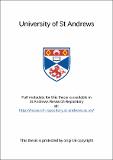Files in this item
Thermodynamics of concentrated aqueous solutions of halide mixtures
Item metadata
| dc.contributor.advisor | Wyatt, P. A. H. (Peter Arthur Harris) | en |
| dc.contributor.author | Gilchrist Belmar, Maria Antonieta | en |
| dc.coverage.spatial | x, 228 p | en |
| dc.date.accessioned | 2021-04-08T08:59:23Z | |
| dc.date.available | 2021-04-08T08:59:23Z | |
| dc.date.issued | 1978 | |
| dc.identifier.uri | https://hdl.handle.net/10023/21916 | |
| dc.description.abstract | The object of this work was mainly the adaptation to other partial molar quantities of the method which KcKay and Perring developed for the activity coefficients of solute components in mixed solutions. Equations were deduced which permit the calculation of the partial molar enthalpy of each solute component of a ternary mixed electrolyte solution, at constant partial molar enthalpy of water, and at constant total molality. Similar relations for the partial molar heat capacities were also developed. The system sodium chloride-calcium chloride-water, due to its important role in natural salt deposits, was chosen to investigate the utility of applying these equations. The calorirnetric study of this system was carried out and the partial molar enthalpies of both solutes, sodium chloride and calcium chloride, were determined by the new method. The calorimetric data of the systems sodium chloride- magnesium chloride-water and calcium chloride-magnesium chloridewater were also obtained and in this work the possibility of their treatment by either of the two new adaptions of the McKay-Perring methods is discussed. To appreciate the differences with temperature of the activity coefficients of the components of the systems under investigation, isopiestic measurements were made on the systems sodium chloride-calcium chloride-water, and calcium chloride-magnesium chloride-water, at 45 °C. The activity coefficients were computed ty the McKay-Perring method. Comparison between the calorimetric and the isopiestic results shows that, since the observed changes in log Y+ with temperature are in any case very small and depend upon a difference between two large quantities, it seems most probable that the enthalpies of dilution give a much more reliable estimate of the small variation in log Y+ to be expected over a moderate temperature range. | en |
| dc.language.iso | en | en |
| dc.publisher | University of St Andrews | en |
| dc.subject.lcc | QD501.G5 | |
| dc.subject.lcsh | Chemical kinetics | en |
| dc.title | Thermodynamics of concentrated aqueous solutions of halide mixtures | en |
| dc.type | Thesis | en |
| dc.type.qualificationlevel | Doctoral | en |
| dc.type.qualificationname | PhD Doctor of Philosopy | en |
| dc.publisher.institution | The University of St Andrews | en |
This item appears in the following Collection(s)
Items in the St Andrews Research Repository are protected by copyright, with all rights reserved, unless otherwise indicated.

